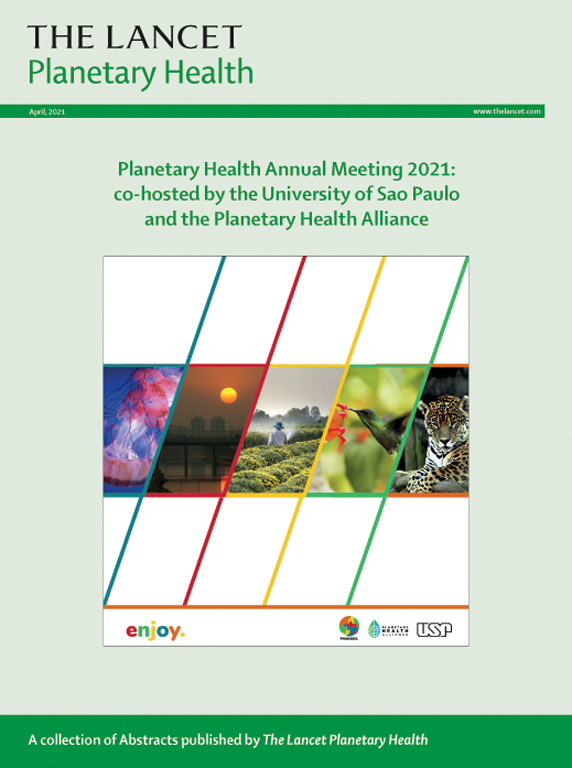气候灾害对急性医疗保健的影响:加拿大不列颠哥伦比亚省2021年热浪的案例研究和模型
IF 21.6
1区 医学
Q1 ENVIRONMENTAL SCIENCES
引用次数: 0
摘要
紧急卫生保健系统是抵御日益严重的气候对人口健康影响的最后一层保护。过去十年的气候灾害导致在预防措施不足的情况下寻求紧急护理的患者激增。我们的目的是了解紧急医疗服务的提供和获取如何容易受到气候灾害的影响。方法我们建立了一个离散事件模拟模型来复制加拿大最致命的气候灾害- 2021年热浪期间的急性医疗保健系统动态。我们使用公共数据和政府报告来估计人均资源容量,并使用相互关联的轨迹来定义患者在资源之间的移动。在干预方案中,我们评估了急诊科和院前设置的一揽子三种干预措施(灾难发生前增加人员配置、大规模伤亡程序和门诊冷却床)的效果。在29天的时间里,我们测量了六个关键绩效指标(kpi),以比较基线和干预模型之间等待时间的统计变化(医生初始评估等待时间;大多数急症患者等待急诊科床位的时间;最不急症患者等待急诊科床位的时间;救护车响应时间;登机时间;以及在急诊室的总时间)。使用蒙特卡罗方法,我们运行了基线模型和干预模型100次。我们根据实际数据验证了基线模型输出,所有KPI中位数没有统计学上的显着差异。与热浪前期相比,基线模式对热浪期间6个kpi中的5个指标产生了显著的负面影响。干预模式下,热浪期间4项kpi较热浪前有显著改善,其余2项kpi无显著变化。值得注意的是,通过干预措施,急诊科的等待时间减少了35%以上。该模型复制了现实世界的模式,是系统动力学的有效表示。我们的研究结果表明,即使是患者人数的小幅增加,也可能对医疗服务的获取和提供产生不利影响。该模型还表明,通过积极的规划,可以避免气候灾害期间的医疗延误。资助不列颠哥伦比亚省政府。本文章由计算机程序翻译,如有差异,请以英文原文为准。
Climate disaster effects on acute health care: a case study and model of the 2021 heatwave in British Columbia, Canada
Background
Acute health-care systems are a final layer of protection against growing climate impacts on population health. Climate disasters over the past decade have resulted in surges of patients seeking emergency care when preventive measures fall short. We aimed to understand how acute health-care delivery and access is vulnerable to climate disasters.
Methods
We built a discrete event simulation model to replicate acute health-care system dynamics during Canada's deadliest climate disaster—the 2021 heatwave. We used public data and government reports to estimate resource capacity per capita and interconnected trajectories to define the movement of patients between resources. In an intervention scenario, we evaluated the efficacy of a package of three interventions in the emergency department and prehospital settings (upstaffing before the disaster, mass casualty procedures, and outpatient cooling beds). Across a 29-day period, we measured six key performance indicators (KPIs) to compare statistical changes in waiting times between baseline and intervention models (physician initial assessment waiting time; waiting time for emergency department bed among most acute patients; waiting time for emergency department bed among least acute patients; ambulance response time; boarding time; and total time in the emergency department). Using Monte Carlo methods, we ran both baseline and intervention models 100 times.
Findings
We validated baseline model outputs against real-world data, with no statistically significant differences in all KPI medians. The baseline model showed significant negative effects on five of the six KPIs during the heatwave compared with the preheatwave period. Under the intervention model, four KPIs had significant improvements during the heatwave compared with the preheatwave period while the other two KPIs did not significantly change. Notably, emergency department waiting times decreased by over 35% with the interventions.
Interpretation
The model replicated real-world patterns and was a valid representation of system dynamics. Our findings showed that even a small surge in patients can be detrimental to health-care access and delivery. The model also suggests that health-care delays during climate disasters can be avoidable with proactive planning.
Funding
The Government of British Columbia.
求助全文
通过发布文献求助,成功后即可免费获取论文全文。
去求助
来源期刊

Lancet Planetary Health
Multiple-
CiteScore
28.40
自引率
2.30%
发文量
272
审稿时长
8 weeks
期刊介绍:
The Lancet Planetary Health is a gold Open Access journal dedicated to investigating and addressing the multifaceted determinants of healthy human civilizations and their impact on natural systems. Positioned as a key player in sustainable development, the journal covers a broad, interdisciplinary scope, encompassing areas such as poverty, nutrition, gender equity, water and sanitation, energy, economic growth, industrialization, inequality, urbanization, human consumption and production, climate change, ocean health, land use, peace, and justice.
With a commitment to publishing high-quality research, comment, and correspondence, it aims to be the leading journal for sustainable development in the face of unprecedented dangers and threats.
 求助内容:
求助内容: 应助结果提醒方式:
应助结果提醒方式:


